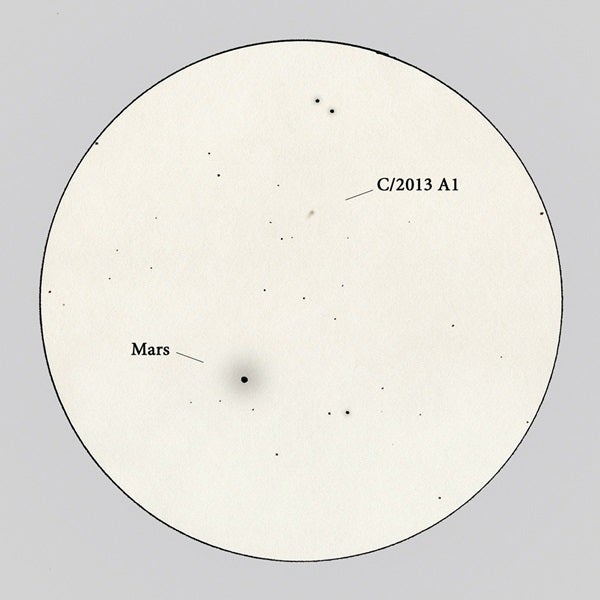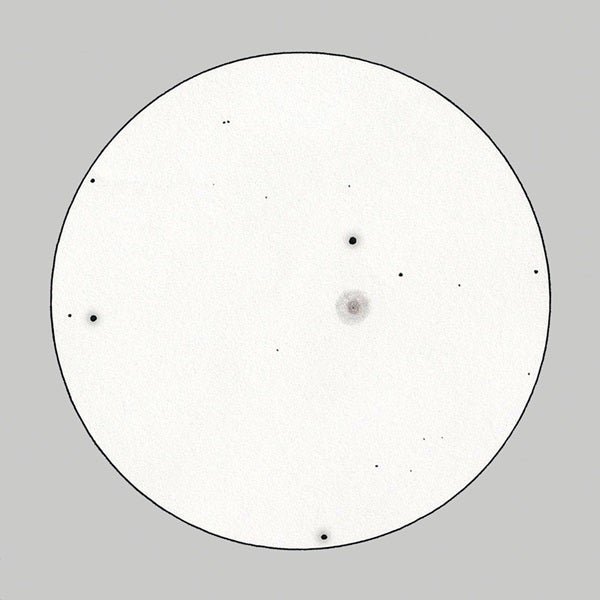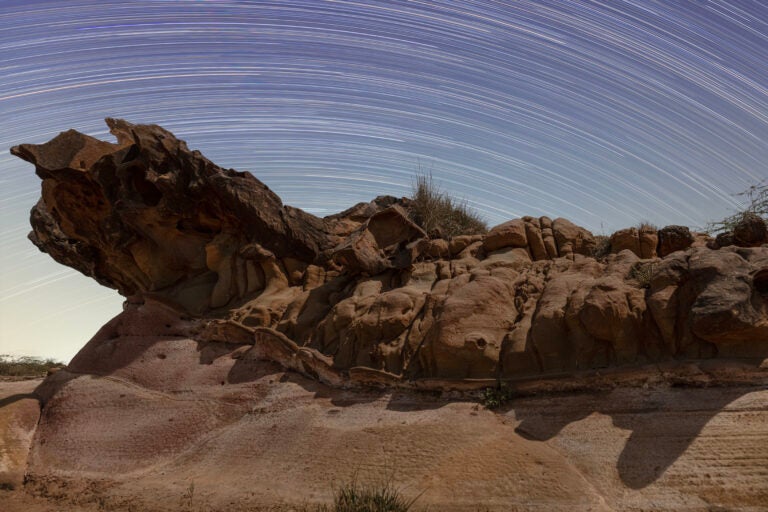To participate, you must be an Astronomical League member (either through an astronomy club or at large) and sketch at least 75 of the listed objects. You can use up to 10 previous sketches, so you might want to save those for special ones that you’ve already logged. For instance, I’ll toss in a 2013 sketch of the Double Cluster — I don’t relish another two-night session of star plotting! For this column, I decided to share two of the images I submitted.
The time of my sketch was just 8½ hours later. Both objects easily fit in the field of view of an eyepiece that gave a magnification of 138x in a 16-inch scope. Because of its close proximity to Mars (16′ separation), the comet was too dim to catch without first placing Mars just outside the field. Once I located it, I nudged the scope so that I could see the two together. Overall, Siding Spring was faint with a slightly brightened, condensed coma. I also could see a short, diffuse tail stretching north to south.
Located just 1.6′ south of an 8th-magnitude star, the Eskimo Nebula measures 47″ by 43″ with a magnitude of 9.2. This bluish example of star death is a treat regardless of telescope size. You can spot the magnitude 10.5 central star even through a 4-inch scope.
Increase to an 8-inch instrument, and you’ll see the nebula divided in half by a distinct dark ring. Through a 16-inch scope, the central disk becomes brighter, revealing its two shells for that face-in-a-parka guise.
You’ll find more information on the Astronomical League’s program at www.astroleague.org. Here’s wishing you success on achieving the Sketching Observing Award. Comments or suggestions? Contact me at erikarix1@gmail.com.












